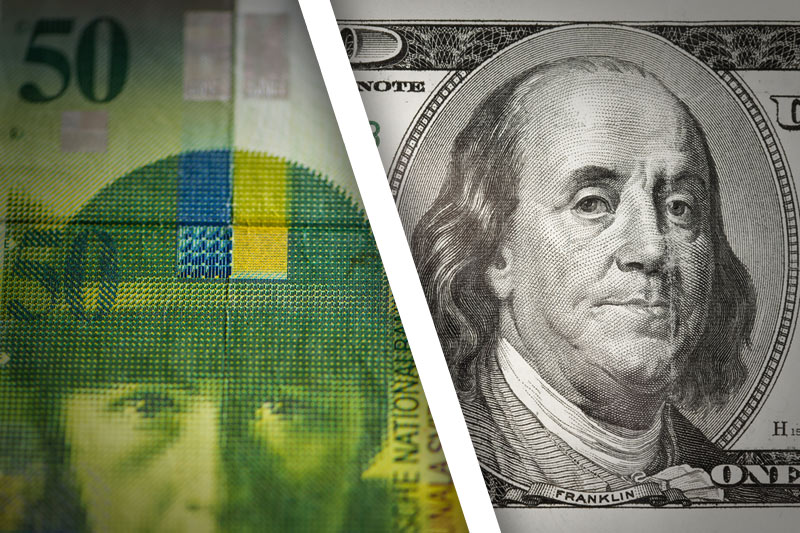Investing.com’s stocks of the week
Investing.com - The U.S. dollar edged lower agains the Swiss franc on Thursday, after the Federal Reserve hinted at further monetary easing measures in 2013, although euro zone debt concerns continued to support demand for the safe haven greenback.
USD/CHF hit 0.9428 during European morning trade, the daily low; the pair subsequently consolidated at 0.9437, edging down 0.16%.
The pair was likely to find support at 0.9381, the low of November 7 and resistance at 0.9475, Wednesday's high.
The dollar came under pressure after the Federal Reserve indicated in the minutes of its October policy meeting that the central bank may need to expand its monthly purchases of bonds next year, after the expiration of a program to extend the maturities of assets on its balance sheet, known as Operation Twist.
The discussion indicates that Fed officials judge the economy still needs record stimulus to reduce an unemployment rate stuck near 8%.
But market sentiment remained in check after official data showed that the pace of Germany's economic growth slowed to 0.2% in the third quarter, following a 0.3% increase in the previous quarter.
Investors were also concerned over the looming “fiscal cliff” in the U.S., approximately USD600 billion in automatic tax hikes and spending cuts due to come into effect on January 1.
There are fears the U.S. economy will fall back into a recession, unless a divided Congress and the White House can work out a compromise before then.
The Swissie was steady against the euro with EUR/CHF easing up 0.05%, to hit 1.2043.
Later in the day, the U.S. was to release reports on initial jobless claims, consumer price inflation, crude oil stockpiles, in addition to data on manufacturing activity in New York and Philadelphia.
Meanwhile, a speech by Fed Chairman Ben Bernanke was to be closely watched for any indications on the future possible direction of monetary policy.
USD/CHF hit 0.9428 during European morning trade, the daily low; the pair subsequently consolidated at 0.9437, edging down 0.16%.
The pair was likely to find support at 0.9381, the low of November 7 and resistance at 0.9475, Wednesday's high.
The dollar came under pressure after the Federal Reserve indicated in the minutes of its October policy meeting that the central bank may need to expand its monthly purchases of bonds next year, after the expiration of a program to extend the maturities of assets on its balance sheet, known as Operation Twist.
The discussion indicates that Fed officials judge the economy still needs record stimulus to reduce an unemployment rate stuck near 8%.
But market sentiment remained in check after official data showed that the pace of Germany's economic growth slowed to 0.2% in the third quarter, following a 0.3% increase in the previous quarter.
Investors were also concerned over the looming “fiscal cliff” in the U.S., approximately USD600 billion in automatic tax hikes and spending cuts due to come into effect on January 1.
There are fears the U.S. economy will fall back into a recession, unless a divided Congress and the White House can work out a compromise before then.
The Swissie was steady against the euro with EUR/CHF easing up 0.05%, to hit 1.2043.
Later in the day, the U.S. was to release reports on initial jobless claims, consumer price inflation, crude oil stockpiles, in addition to data on manufacturing activity in New York and Philadelphia.
Meanwhile, a speech by Fed Chairman Ben Bernanke was to be closely watched for any indications on the future possible direction of monetary policy.
